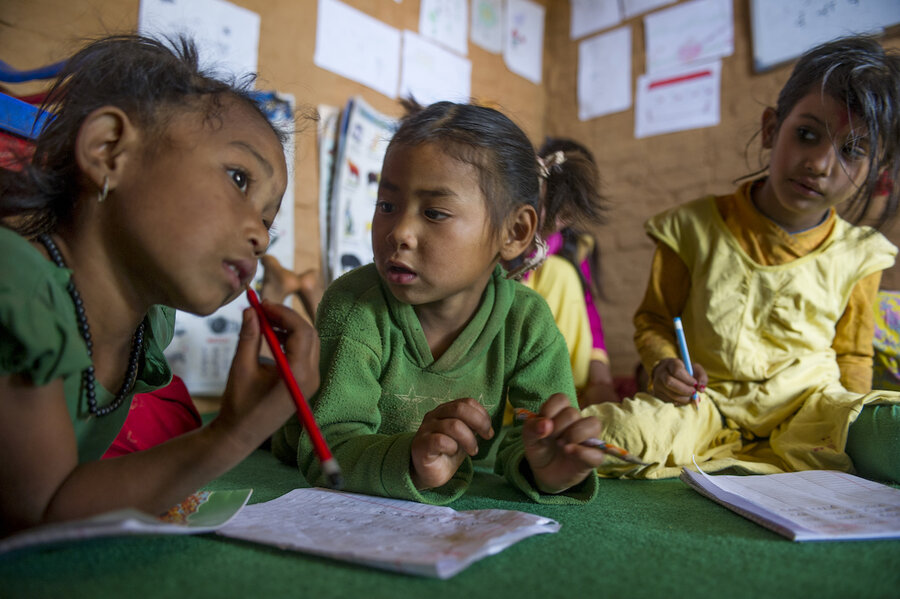Child labor in decline: Life gets better for 94 million children
Loading...
Almost 100 million more children are getting to have a childhood than at the beginning of the 21st century.
Child labor has dropped by 38% since 2000, according to data from international humanitarian organization Save the Children. “In 2000, there were 246 million children in labour ... compared to 152 million in 2016,” writes Phoebe Marabi, a senior specialist on child protection with Save the Children in Nairobi, in an email interview.
Save the Children attributes that progress to a range of policy efforts. Education, for example, is an essential area. Child labor specialists stress the importance of accessible, high-quality schools.
Why We Wrote This
When children are allowed an education instead of being forced to work, it has ripple effects for decades. The results include everything from better earnings to healthier families.
Social protections are also important; these can include the promotion of decent jobs for adults as well as family access to health benefits and support. Another factor is the establishment of legal standards around child labor.
The last category, says Benjamin Smith, senior specialist for child labor at the International Labor Organization, a United Nations agency, has been key – especially as national governments organize around the issue of child labor and find ways to mobilize various ministries to move the needle.
Child labor is a tough, complicated issue. It’s been of concern to the ILO since its founding in 1919, according to Mr. Smith. He says the recent reductions are good news, but should be taken with a grain of salt.
“It is not going fast enough,” he says.
One region where there remains much more work to be done, he adds, is Africa.
“In terms of both absolute numbers and in the prevalence rate, sub-Saharan Africa is a particular concern,” he says. “Africa is clearly where we need a breakthrough if we are going to achieve the elimination of child labor.”
Farming accounts for some 71% of child labor – globally, children also work in mines or warehouses and in commercial fishing. On paper, the majority of child laborers are boys, though the number of girls involved in domestic labor is likely underreported.
Children are forced into work as early as age 5, with cascading negative consequences throughout their lives, from lack of education to health issues. “If more efforts can be channeled on prevention rather than response, then this will push the work further,” says Ms. Marabi.
“The composite of a child who migrates with her family, waking up at predawn hours, working in the hot sun exposed to insect bites, using sharp tools, and having her education negatively affected, is somewhat of a typical one,” says Mr. Smith.
“There is no country ... exempt from the problem.”





